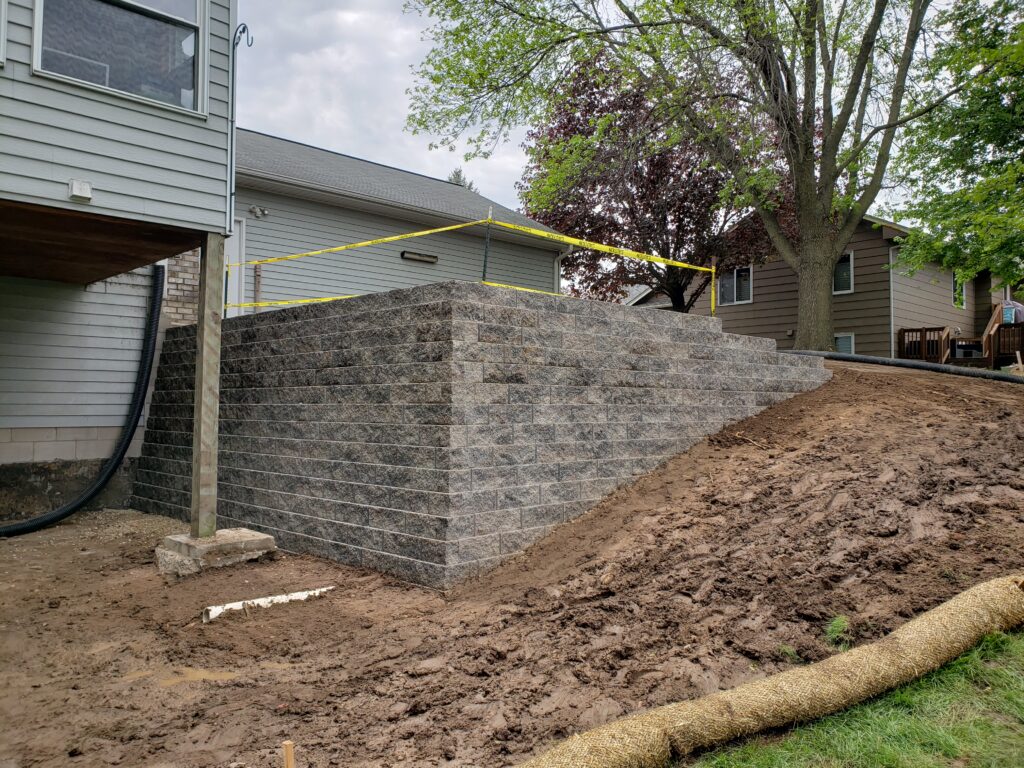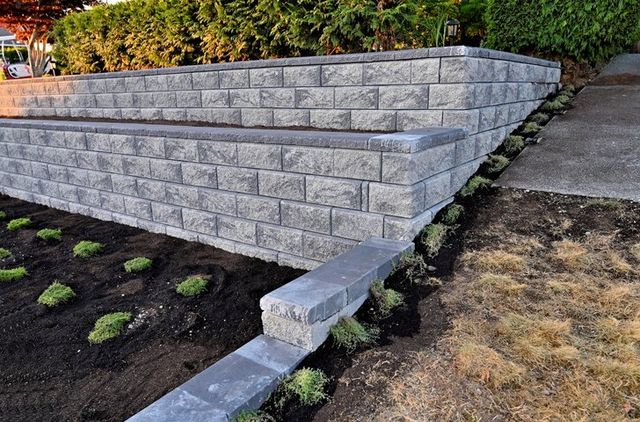Some Of Retaining Wall Contractors Pittsburgh
An Unbiased View of Retaining Wall Contractors Pittsburgh
Table of ContentsSome Known Questions About Retaining Wall Contractors Pittsburgh.10 Easy Facts About Retaining Wall Contractors Pittsburgh ExplainedNot known Factual Statements About Retaining Wall Contractors Pittsburgh The Definitive Guide for Retaining Wall Contractors PittsburghRetaining Wall Contractors Pittsburgh - Questions
As you may extremely well know, draining is crucial since it channels the runoff water into the assigned area to avoid any circumstances of flooding. Perhaps the best enemy of a building's architectural participants is water due to the fact that it can saturate the wood, requiring it to rot and collapse. In addition, water can possibly blow up apart foundations made of poured concrete and rock if it's strong sufficient.With maintaining wall surfaces, you can route water around your property instead of on it and stay clear of these problems. Preserving wall surfaces offer features beyond aesthetic enhancement. When used correctly, they can give the architectural strength that your project needs, providing you comfort that the structure will stay strong for several years to come.
In modern technology, a keeping wall surface might be a considerable practical building. The first function of the wall is to maintain the earth or various other products vertical or near-vertical.
Rumored Buzz on Retaining Wall Contractors Pittsburgh
Preserving wall surfaces are solid wall frameworks that sustain soil laterally to maintain the ground surface area at unique elevations on both sides of the structure. If a preserving wall surface is not existing, the soil at a greater altitude will have a tendency to sink till it reaches its all-natural, steady form. This wall keeps the dirt or other material from changing in scenarios where the elevation adjustments suddenly.
Other on the surface applied tons are safely transmitted to a structure by keeping structures created to endure the dirts or backfill. Retaining wall surfaces are full wall surfaces that work as landscape aspects. Others are elements of the facilities of a structure, a road, or a bridge. They're typically constructed from solid in-place concrete, masonry block wall surfaces, or significant timber.


Prior to roadway structure, straws were used to enhance unburned bricks, while fascine mattresses strengthen soft dirt down payments. The fundamental phenomenon at work in enhanced earth walls is that if the sizes of a product efficient in sustaining tension are ingrained inside it in the preferred direction, a mass of soil can be offered tensile stamina.
Fig 3: Cantilever Retaining WallCourtesy: rccconstruction.blogspot.com The stem and base piece are two parts of the cantilever retaining wall surface. As a cantilever keeping wall, a precast keeping wall review surface is utilized.
The Of Retaining Wall Contractors Pittsburgh
A cantilever preserving wall is normally very affordable up to 10 meters. Compared to a gravity retaining wall surface, this maintaining wall uses much less concrete.
Fig 4: Counterfort Retaining WallCourtesy: civiclick.com Counterfort maintaining walls resemble cantilever keeping wall surfaces, other than they include thin vertical concrete webs at normal periods along the rear of the wall, referred to as counterfort. The counterfort links the piece and the base, and their objective is to lessen the dirt's bending moments and shear stress and anxieties on the wall.
Fig 5: Strengthen Keeping WallCourtesy: civiconcept.com A type of counterfort wall is a buttress wall. Maintaining wall surfaces of this sort are constructed on the face of the wall instead than within the backfill.

3 Easy Facts About Retaining Wall Contractors Pittsburgh Shown
Modern sheet piles are steel, wood, or precast concrete parts, among other materials. The energetic and passive stress discover here and anxieties acting on the lower fifty percent of a Cantilever sheet pile wall can occasionally hold it in location. Fig 9: Secured Keeping WallCourtesy: buchheitconcrete.com An anchor right into the soil, rock or various other immune product is made use of in anchored retaining walls to withstand active soil pressure forces.
Since the anchors are filled axially, they can resist greater tons and are a great usage of material, particularly since the concrete stem won't require to be as thick. They're additionally highly durable and immune to greater pressures when there's much less space to collaborate with, so you'll see them on building and construction sites where close-by structures are a concern.
It contains a fixed upright concrete strengthened concrete slab. The passive and energetic stress operating the reduced half of the wall keep it in position (Retaining Wall Contractors Pittsburgh). You can protect your structure by creating a retaining wall. When your structure is put in a sloping atmosphere, retaining walls are planned to withstand and fight side gravity.
Retaining walls are a useful remedy for protecting against sinkholes from harming your landscaping. They are used to supply level surface areas on inclines and stabilize sloping landscapes. The landscape location can be secured with a retaining wall. Therefore, upkeep can be lessened gradually. Keeping walls can add to the visual value of your setting.
The 10-Minute Rule for Retaining Wall Contractors Pittsburgh
Planning clearance is required if the wall surface is above 1-meter high near a roadway or pathway or over 2-meters high elsewhere. Building guidelines might not be needed for independent, free standing keeping walls; however, all building and constructions should be structurally sound and well kept. 1. Retaining wall style and its types utilized on building and construction.
Keeping Wall: Kinds, Objective, Advantages & Disadvantages. 10 Kinds Of Keeping Wall What Is A Retaining look at this website Wall Surface Gravity Retaining Wall Surface Retaining Wall Design. What is a Retaining wall surface?